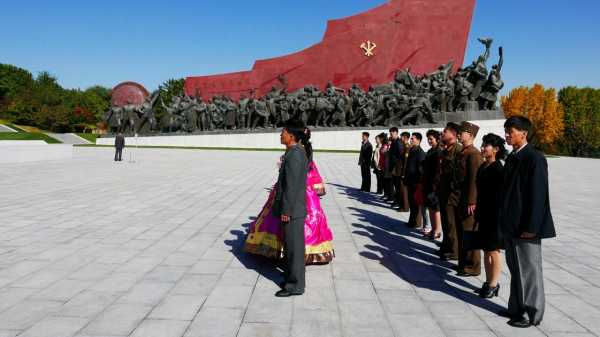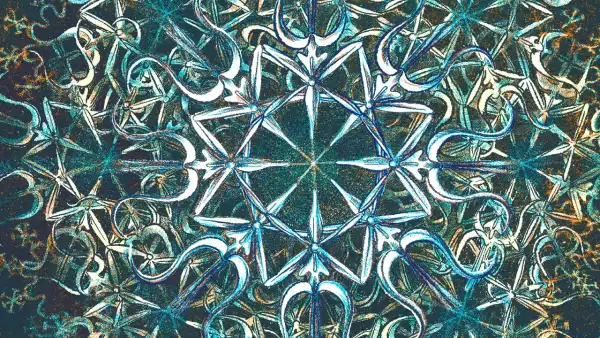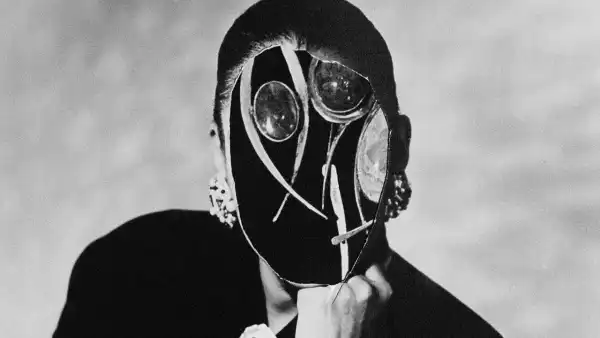
When I introduced Claude Lanzmann’s “A Visitor from the Living” and “The Karski Report” at the Quad Cinema on Saturday night, I emphasized that—despite being composed almost entirely of a single talking-head interview—both films are as much a matter of the image, and as philosophically profound regarding the nature of an image, as those by the most inventive fiction filmmakers. His second-to-last film, “Napalm,” which came out in France last year and will screen at the Quad on November 15th and November 20th, is no different—though in it Lanzmann’s primary talking-head interview is with himself.
The film is centered on an event from Lanzmann’s past, one that he already unfolded in detail in his autobiography, “The Patagonian Hare.” In 1958, he was part of a delegation of French cultural figures, all on the left, who were invited to visit North Korea, just five years after the end of the Korean War. While there, Lanzmann, feeling tired, wanted Vitamin B shots; he and the North Korean nurse, Kim Kum Sun, who administered the injections (into his buttocks), were fiercely attracted to each other and embarked on a bold, thwarted, and ill-fated romantic adventure that’s as much a tale of derring-do as of passion, of resistance as of oppression.
There’s an element of comedy in the story, and also of ironic frivolity—of personal pleasure complicating a historic mission of high purpose. But what emerges in “Napalm” is nonetheless a tale of fear, of political terror, of tyrannical injustice and imminent death. Above all, it’s a story of history in the present tense, in the same vein as Lanzmann’s historic film “Shoah.” No less than that and Lanzmann’s other films, “Napalm” is first-person filmmaking on a global scale.
Like most of Lanzmann’s works after “Shoah,” “Napalm” is a film in two parts, with the interview portion following a historical prelude that provides the background for the drama. Here that prelude is the Korean War, which Lanzmann evokes through images of his present-day visit to North Korea (these, too, involving the ironic comedy of his political tourism in the literal grip of local handlers). He films the vast and desolate center of Pyongyang, plus the city’s main historical monuments and a museum of the war, or, rather, of Western weaponry captured in the war, alongside an extended selection of archival footage showing the devastation of North Korea in the war. The underlying subject of “Napalm” is the mass destruction inflicted on the country by the United States and its allies (including France). Four million of North Korea’s thirty million civilian inhabitants died in the war; the United States burned much of the country with more than three million litres of napalm.
Lanzmann explains that he was a Communist sympathizer, having fought in the French Resistance under the Communist aegis, and bitterly opposed the Korean War (though he admits that an overconfident Kim Il Sung launched it). His 1958 visit, he says, was motivated by his political sympathy for the regime. Revisiting it now (as he also did, he says, in 2004), he gazes at length on the official sites to which, as a foreign visitor, he is brought by his handlers, who are also seen onscreen. He dwells in particular on the Mansu Hill Grand Monument, with its paired sixty-foot-tall statues of Kim Jong Il and Kim Il Sung, and discusses them in terms that have a particular bearing on his own life and art. “The desire for eternity is at the heart of mankind,” Lanzmann, who was eighty-nine at the time of this visit, says. “And since the dawn of the human race, humanity has had a fundamental preoccupation: how to eradicate death, how to live knowing with utter certainty that death will triumph, whatever the inventions or brilliant creations of our civilizations to abolish and mask this inevitable end. Such is the origin, the root of art . . .”
“Napalm” is a fitting personal epilogue to Lanzmann’s historic series of works about the Holocaust. “Shoah,” as Lanzmann has said, is a movie that takes the place of images that don’t and can’t exist—images of death in the gas chambers in Nazi extermination camps. “A Visitor from the Living,” about a Red Cross doctor who reported favorably on Theresienstadt, and “The Karski Report,” about a Polish resistance fighter, were centered on the notion of sympathetic understanding, of the ability to see the implicit personal agony embedded in public spectacles and political discourse. And “Sobibor” was about a daring act of violent resistance to the Nazi regime. “Napalm” takes its place in this series; it, too, is a story of survival and resistance (and even its title turns out to have as strong a personal significance as a military or political one). What’s clear, in Lanzmann’s narration of his romantic adventure with Kim Kum Sun, is that her desire to associate, , personally and erotically, with him was an act of daring resistance to an astonishingly oppressive regime—and Lanzmann, taking some extremes measures to help her, committed bold acts of resistance (albeit far less risky ones) as well.
Lanzmann is a lively, un-self-sparing, confessional storyteller whose detailed narratives have an intense visual aspect. In “The Patagonian Hare,” he describes the search for Holocaust survivors to interview in “Shoah” as a sort of casting: he sought people of strong presence, whose discussions of their own lives were something of a performance that would prove dramatically effective. He used no archival footage; rather, he filmed the remaining traces and transformed places that were the sites of the deportation and murder of European Jews. What he created, through the synthesis of these present-day images and discussions, was images of the imagination, images that arise from viewers’ imaginative sympathy but are as concrete and as actual as the nonexistent ones that they approach.
In “Napalm,” as Lanzmann films himself, in 2015, at a bridge that figures in the story of his romantic adventure with Kim, it comes as a shock when—in this drastically different context—he mentions “Shoah” and quotes one of its central participants, Simon Srebnik: “Das ist das Platz”—“This is the place.” Both “Shoah” and “Napalm” were made with the same artistic method and the same political principle—of Lanzmann putting himself in “the place” and embodying the personal experience of history. The core of that experience is the principle of life in the face of a tyrannical cult of death. Here, too, the bearing of witness is a crucial act in that affirmation. In “A Visitor from the Living,” Lanzmann offers an empathetic and insightful interpretation of an official speech by the Jewish “leader” of Theresienstadt, who is actually serving under terrifyingly direct orders from Adolf Eichmann. In “Napalm,” Lanzmann—in a dramatic twist that’s too good to spoil—does something remarkably similar, revealing a seemingly pro forma and inexpressive text to be—in the light of the obvious duress under which it was created—a subtle but powerful personal cry of passion.
This Wednesday will also mark the release of Lanzmann’s last film, “Shoah: Four Sisters,” featuring interviews with four women that were made for “Shoah” in the nineteen-seventies. (I wrote about it last year when it was shown at the New York Film Festival.) All of these interviews are centered on family, intimacy, and survival; along with “Napalm,” they’re stories of defiance, of intimate and family life, and of enduring, unresolved anguish. One of the subjects, Ruth Elias, tells of her pregnancy in Auschwitz; Ada Lichtman, interviewed along with her husband, discusses her forced labor in Sobibor, which is where the couple met. (He was a cobbler; she was a seamstress who also repaired the dolls of murdered Jewish children that were given as gifts to the children of German officers.) Hanna Marton, who survived along with her husband, reads from his 1944 diary to evoke the day-to-day terrors as the Jews of their town of Kolozsvár (now Cluj-Napoca) awaited deportation to concentration camps. And Paula Biren talks of the Lodz ghetto and the appalling sham of Jewish self-administration, enforced by Germany through terror, that poisons survival with guilt.
The transformation in Lanzmann’s films of words into images is more than an effort of transmission, more than a work of memory; it’s a glimmer of ordinary happiness as righteous and sacred demand, as the very heart of sublimity—and the promise that survivors of horror leave to their future heirs. In “Napalm,” he affirms that personal desire and dignity in the face of terror are the very mark of humanity, of the essential spirit that tyranny seeks to snuff out or pave over with destructive uniformity. At the heart of Lanzmann’s relentlessly confrontational, fact-based work is a sumptuous, radical aestheticism.
Sourse: newyorker.com






